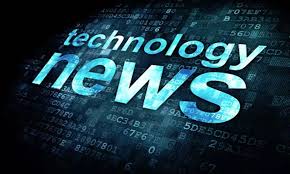
Exploring the Latest IT Tech Trends: A Glimpse into the Future of Technology
Emerging IT Technologies Shaping the Future
The information technology (IT) industry is continually evolving, with rapid advancements that are reshaping the way we live and work. As we delve into the latest trends, it’s clear that certain emerging technologies are set to have a profound impact on our future. Here’s a look at some of the most exciting IT tech developments on the horizon.
Artificial Intelligence and Machine Learning
Artificial Intelligence (AI) and its subset, Machine Learning (ML), are at the forefront of technological innovation. AI refers to computer systems designed to mimic human intelligence by performing tasks such as recognizing speech, making decisions, and translating languages. ML takes this a step further by giving computers the ability to learn and improve from experience without being explicitly programmed.
These technologies are already present in everyday life, from virtual assistants like Siri and Alexa to more complex applications such as fraud detection systems and personalized recommendations on streaming services. The future promises even more advanced AI capabilities, potentially transforming industries like healthcare with predictive diagnostics or enabling autonomous vehicles to navigate our roads safely.
Internet of Things (IoT)
The Internet of Things is another transformative trend. IoT refers to the vast network of devices connected to the internet, collecting and sharing data. This includes everything from smart home appliances and wearable fitness trackers to industrial sensors monitoring machinery performance.
The potential for IoT is enormous, enabling smarter cities where traffic flows are optimized in real-time or energy grids that automatically adjust production based on consumption patterns. As IoT devices become more prevalent, they will generate massive amounts of data that can be analyzed for insights into human behavior and system efficiencies.
Cybersecurity Advances
With an increase in digital connectivity comes greater vulnerability to cyberattacks. As such, cybersecurity remains a critical focus for IT professionals. New threats emerge constantly, requiring innovative solutions that can outpace malicious actors.
Forthcoming cybersecurity measures include advanced encryption methods, AI-powered threat detection systems, and blockchain technology for secure transactions. The goal is not only to protect against current threats but also to anticipate new types of attacks before they occur.
Edge Computing
Edge computing is gaining traction as a solution to some limitations posed by cloud computing—particularly latency issues when processing large amounts of data over a distance. Edge computing involves processing data closer to where it’s generated (at “the edge” of the network), which reduces latency and bandwidth use.
This technology is especially pertinent for applications requiring real-time processing, such as in autonomous vehicles or remote medical diagnostics. As 5G networks expand their reach, edge computing will likely become even more integral in facilitating fast and efficient data processing.
The Quantum Leap: Quantum Computing
A potential game-changer on the distant horizon is quantum computing. Quantum computers leverage quantum bits (qubits) which can exist in multiple states simultaneously—unlike traditional binary bits that exist as either 0 or 1. This allows quantum computers to perform complex calculations at speeds unattainable by conventional computers.
The implications are significant across fields like cryptography, where quantum computers could potentially break today’s encryption techniques; however, they also hold promise for solving complex scientific problems beyond the reach of current technology.
In Conclusion
The IT landscape is one characterized by continuous change and innovation. These emerging technologies represent just a fraction of what’s developing within this dynamic field—a field that has become integral not only in shaping modern business but also in defining our daily lives. As these technologies mature and become mainstreamed within society over time there will be profound implications socially economically politically ethically; thus necessitating thoughtful dialogue about their uses impacts governance moving forward into an increasingly digital future.
7 Key Advantages of Information Technology: Boosting Productivity, Collaboration, and Security in the Digital Age
- Increased efficiency and productivity through automation of tasks
- Enhanced communication and collaboration capabilities across global teams
- Improved data management and analysis for informed decision-making
- Greater connectivity and accessibility to information from anywhere at any time
- Facilitation of remote work opportunities, promoting work-life balance
- Empowerment of innovation and creativity through advanced software tools
- Enhanced cybersecurity measures to protect sensitive data and privacy
Four Key Concerns in IT Technology: Cybersecurity Threats, Privacy Issues, the Digital Divide, and Job Displacement
Increased efficiency and productivity through automation of tasks
One of the key advantages of IT technology is the significant boost in efficiency and productivity achieved through the automation of tasks. By leveraging automation tools and technologies, businesses can streamline repetitive processes, reduce human error, and allocate resources more effectively. This not only saves time but also enhances accuracy and consistency in operations. With automation handling routine tasks, employees can focus on more strategic and creative endeavors, leading to a more productive workforce and ultimately driving overall organizational success.
Enhanced communication and collaboration capabilities across global teams
The integration of IT technologies has significantly enhanced communication and collaboration capabilities across global teams. Through tools such as video conferencing, instant messaging platforms, and cloud-based project management systems, team members from different parts of the world can seamlessly connect and work together in real-time. This level of connectivity not only fosters a sense of unity and camaraderie among team members but also improves efficiency and productivity by enabling swift decision-making and streamlined workflows. Additionally, the ability to share resources and information instantaneously facilitates knowledge exchange and innovation, ultimately leading to more successful outcomes for global teams working in today’s interconnected world.
Improved data management and analysis for informed decision-making
One of the significant benefits of IT technology is the enhanced data management and analysis capabilities it offers, empowering organizations to make informed decisions based on reliable insights. With advanced tools and software, businesses can efficiently collect, store, and process vast amounts of data in real-time. This enables them to identify trends, patterns, and correlations that might otherwise go unnoticed, leading to more accurate forecasting and strategic planning. By leveraging IT tech for data management and analysis, companies can gain a competitive edge by making well-informed decisions that drive growth and success.
Greater connectivity and accessibility to information from anywhere at any time
One significant advantage of IT technology is the greater connectivity and accessibility it offers, allowing individuals to access information from anywhere at any time. With the proliferation of smartphones, tablets, and other connected devices, people can stay informed, collaborate with others, and access resources with unprecedented ease. This increased connectivity not only enhances productivity and efficiency but also fosters a more interconnected global community where knowledge and information can be shared instantly across borders and time zones.
Facilitation of remote work opportunities, promoting work-life balance
Information technology (IT) has revolutionized the way we work by facilitating remote work opportunities, thereby promoting a healthier work-life balance. With the advancement of communication tools, collaboration platforms, and cloud-based systems, employees can now work from anywhere in the world with ease. This flexibility allows individuals to better manage their time, reduce commuting stress, and spend more quality time with their families. Remote work opportunities made possible by IT tech not only increase productivity and efficiency but also contribute to a more balanced and fulfilling lifestyle for workers.
Empowerment of innovation and creativity through advanced software tools
The advancement of IT technology empowers individuals and organizations to unleash their creativity and drive innovation through the utilization of sophisticated software tools. These tools provide a platform for exploring new ideas, streamlining processes, and developing groundbreaking solutions across various industries. By leveraging advanced software capabilities, users can enhance collaboration, automate tasks, and unlock new possibilities that were previously unattainable. This pro of IT tech not only fosters a culture of continuous improvement but also propels creativity to new heights, paving the way for transformative breakthroughs in a rapidly evolving digital landscape.
Enhanced cybersecurity measures to protect sensitive data and privacy
Enhanced cybersecurity measures in IT technology play a crucial role in safeguarding sensitive data and privacy in today’s digital landscape. With the increasing volume of data being generated and shared online, the risk of cyber threats and breaches has never been greater. By implementing advanced encryption methods, AI-powered threat detection systems, and robust authentication protocols, organizations can better protect their valuable information from unauthorized access. These cybersecurity measures not only help prevent data breaches but also ensure the privacy and confidentiality of individuals’ personal information, fostering trust and confidence in the digital ecosystem.
Cybersecurity Threats
The rapid advancement of IT technologies also brings about increased cybersecurity risks, with hackers constantly finding new ways to exploit vulnerabilities. As organizations and individuals become more reliant on digital systems and interconnected devices, the potential for cyber threats grows exponentially. From data breaches and ransomware attacks to phishing scams and identity theft, the consequences of inadequate cybersecurity measures can be severe, leading to financial losses, reputational damage, and compromised personal information. The ever-evolving nature of cyber threats necessitates constant vigilance and proactive measures to safeguard sensitive data and mitigate potential risks in an increasingly interconnected world.
Privacy Concerns
As IT tech becomes more integrated into our daily lives, there are growing concerns about data privacy and the potential misuse of personal information by companies or malicious actors. With the increasing amount of data being collected through various devices and platforms, individuals are rightfully worried about how their personal information is being used, stored, and shared without their consent. The risk of data breaches and unauthorized access to sensitive data poses a significant threat to privacy, highlighting the need for robust regulations and ethical practices to safeguard individuals’ personal information in an increasingly digital world.
Digital Divide
The digital divide, stemming from unequal access to IT tech, poses a significant con in today’s society. This gap in technology accessibility can deepen existing societal inequalities and hinder opportunities for individuals lacking sufficient technology resources. Those without access to essential IT tools may face challenges in education, employment, and social engagement, creating barriers to advancement and inclusion in an increasingly digital world. Bridging this digital gap is crucial to ensure that all members of society have the opportunity to thrive and participate fully in the benefits of technological advancements.
Job Displacement
One of the significant concerns surrounding the rapid advancement of IT technology, particularly in automation and AI, is job displacement. As machines and software become more capable of performing tasks that were once the sole domain of human workers, there is an increasing risk that jobs in certain sectors may become obsolete. This shift towards automation is most acutely felt in industries that rely heavily on manual labor, such as manufacturing and transportation. The specter of unemployment looms large for individuals whose roles can be efficiently handled by robots or intelligent algorithms, leading to economic and social challenges. The conversation around these technologies often includes discussions on how to prepare the workforce for a future where continuous learning and adaptation are necessary to remain employable in an ever-changing job market.



